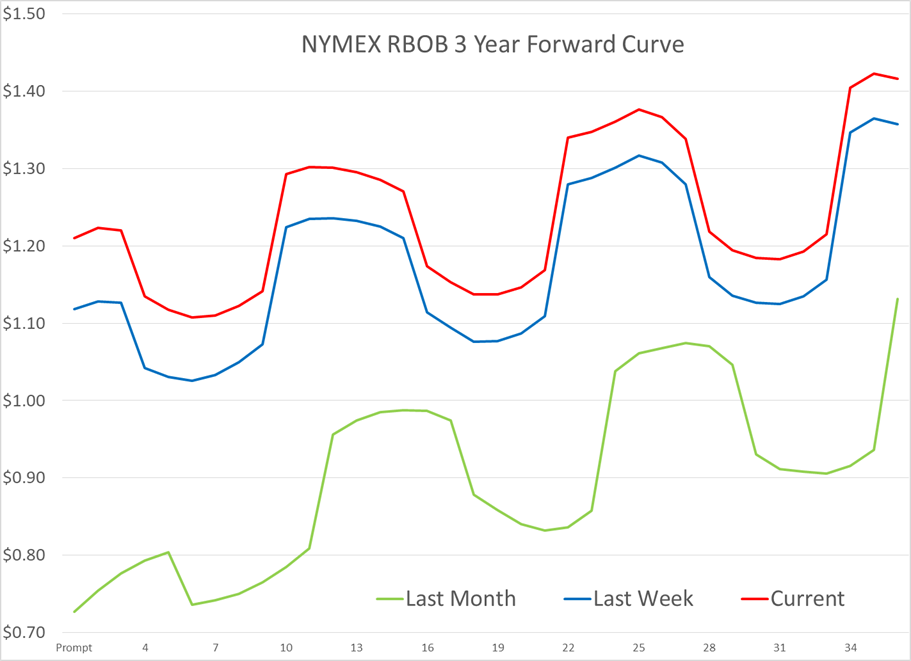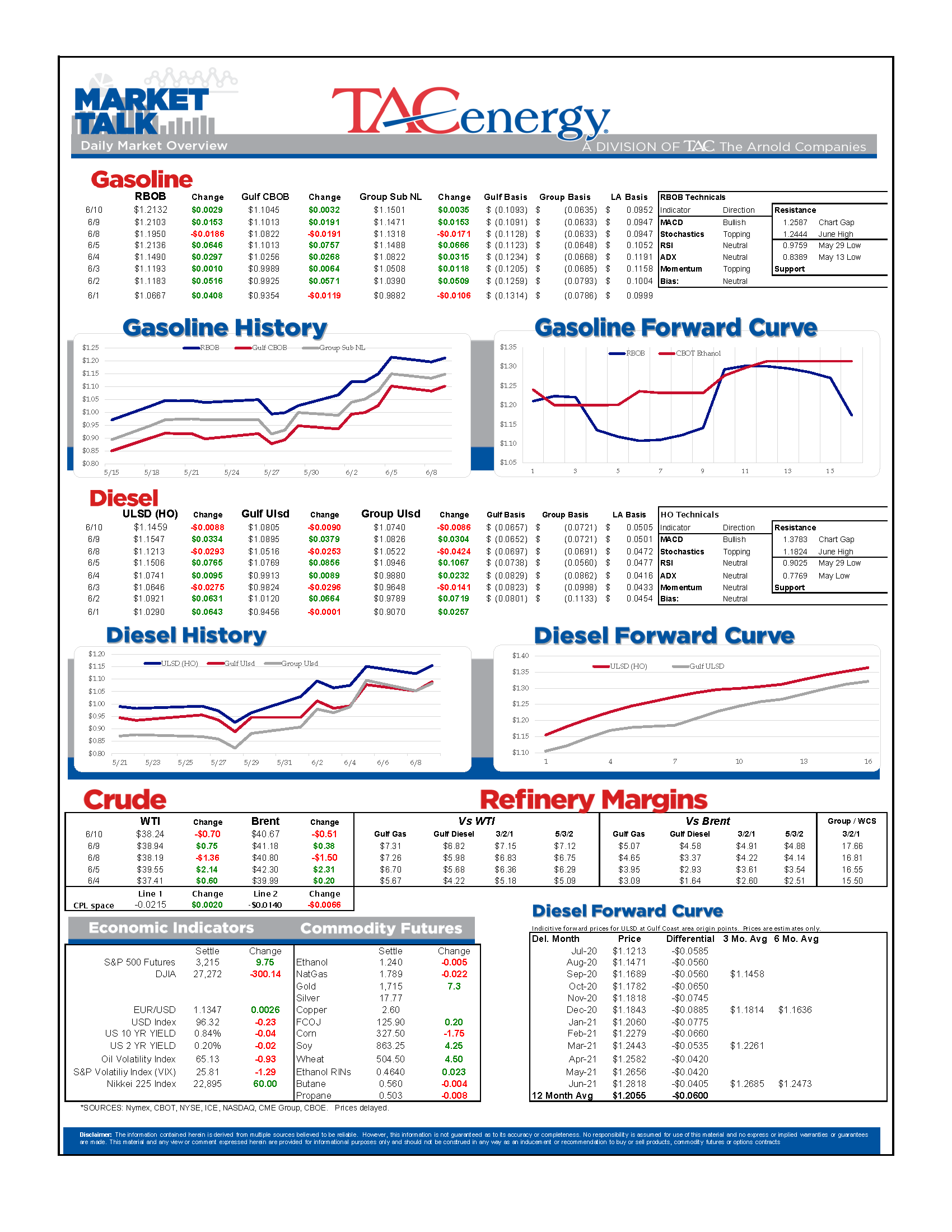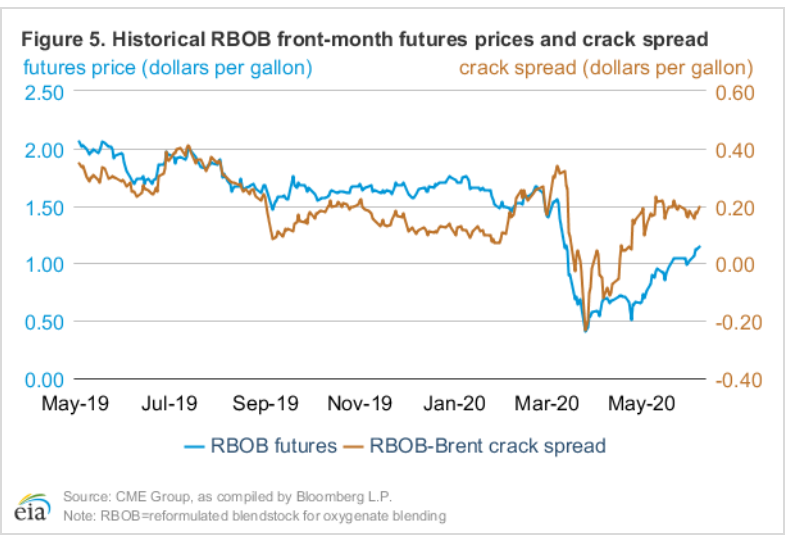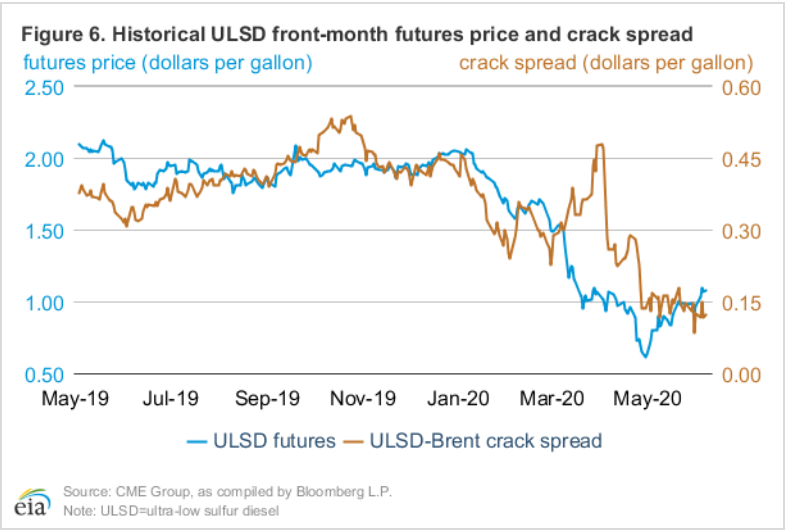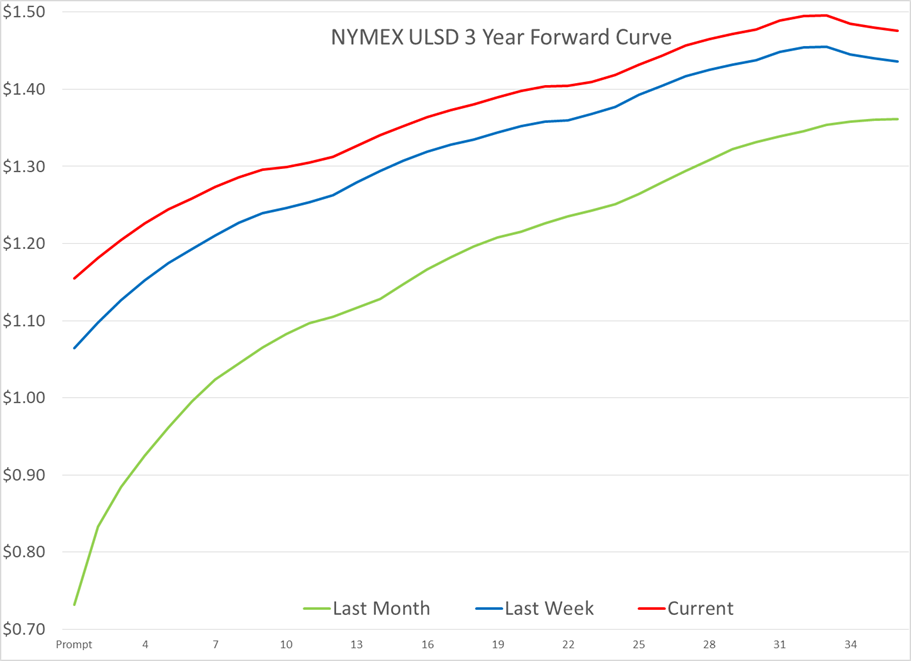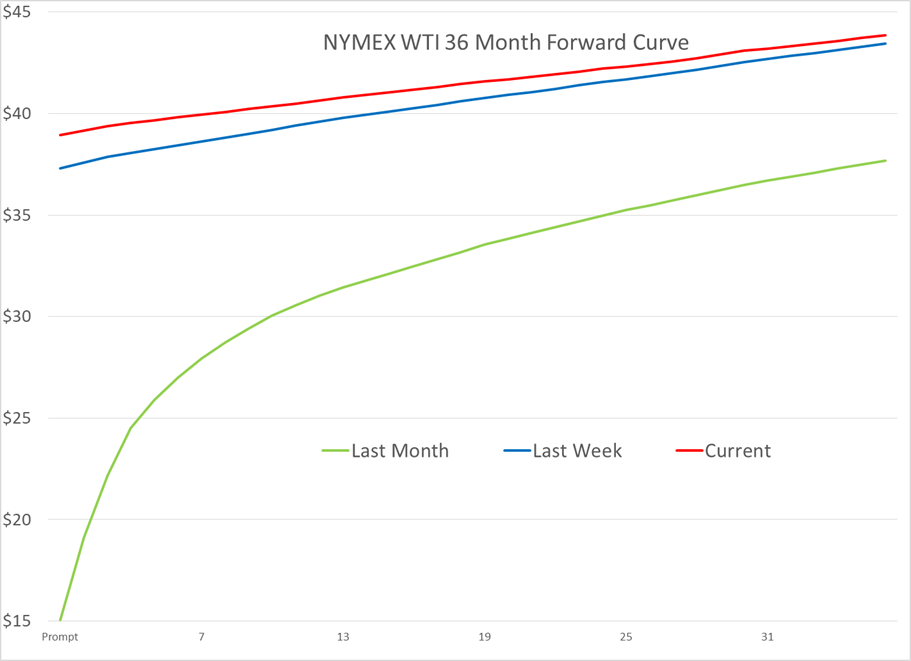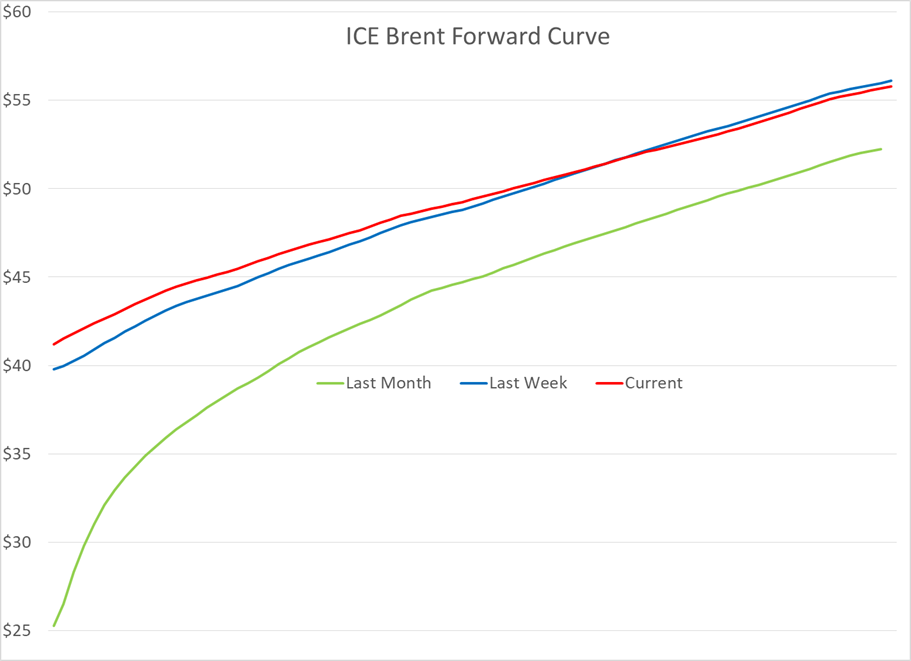Late Rally Pushes Prices Into The Green

After a late rally that pushed prices into the green after trading lower most of the session, energy futures are coming under pressure once again after more inventory builds check the optimism for economic recovery. The price action in the back half of the week looks to be pivotal from a technical perspective, as the recent selling has contracts testing their upward sloping trend lines,. Whether or not that support holds up may mean the difference in another large rally or a substantial correction lower.
The API was said to report another large build in U.S. oil stocks of more than eight million barrels last week, while distillates had another build of 4.3 million barrels, and gasoline stocks declined by 2.3 million barrels. The increase in crude oil was almost all in PADD 3 – likely driven by the spike in Saudi imports offloading along the gulf coast – while Cushing, OK inventories had another large decline of more than two million barrels. If the API estimates carry over to today’s DOE report, we will see U.S.diesel inventories reach an all-time high.
The EIA’s Short Term Energy Outlook painted a more optimistic outlook for the industry, which seemed to encourage Tuesday’s late bounce, suggesting the glut of global fuel inventories would start being reduced this month as demand recovery has been better than previous forecasts. The report also highlighted the stark difference in gasoline and diesel cracks during this recovery – consistent with what the weekly inventory reports have been showing - which could limit refiner’s ability to recover from this crisis.
The FOMC will make a policy statement this afternoon, and will release its economic forecast and host a virtual press conference. While most predictions suggest there will be no new policy announcements today, watch for language about Yield Curve Control, to become more commonplace in coming weeks.
Speaking of forward curves…the charts below show how quickly the energy forward curves have moved away from the super contango witnessed in the past couple of months, which should help encourage some barrels to be pulled from storage as long as the slow and steady demand recovery continues. Distillates still seem the most susceptible to pressure on the curve as the demand recovery hasn’t kept pace with the rapid increase in inventories and tankage is becoming scarce.
Notes from the STEO:
EIA now expects global oil inventories will begin declining in June, a month earlier than previously forecast, with draws continuing through the end of 2021. The sooner-than-expected draws are the result of sharper declines in global oil production during June and higher global oil demand than previously expected.
Declines in U.S. liquid fuels consumption vary across products. EIA expects jet fuel consumption to fall by 64 percent year-over-year in the second quarter of 2020, while gasoline consumption falls by 26 percent and distillate consumption falls by 17 percent. EIA forecasts the consumption of all three fuels to rise in the third quarter and into 2021 but to remain lower than 2019 levels.
After decreasing by 2.8 percent in 2019, EIA forecasts that U.S. energy-related carbon dioxide (CO2) emissions will decrease by 14 percent (714 million metric tons) in 2020.
Click here to download a PDF of today's TACenergy Market Talk.
Latest Posts
Gasoline Futures Are Leading The Way Lower This Morning
The Sell-Off Continues In Energy Markets, RBOB Gasoline Futures Are Now Down Nearly 13 Cents In The Past Two Days
Week 15 - US DOE Inventory Recap
Prices To Lease Space On Colonial’s Main Gasoline Line Continue To Rally This Week
Social Media
News & Views
View All
Gasoline Futures Are Leading The Way Lower This Morning
It was a volatile night for markets around the world as Israel reportedly launched a direct strike against Iran. Many global markets, from equities to currencies to commodities saw big swings as traders initially braced for the worst, then reversed course rapidly once Iran indicated that it was not planning to retaliate. Refined products spiked following the initial reports, with ULSD futures up 11 cents and RBOB up 7 at their highest, only to reverse to losses this morning. Equities saw similar moves in reverse overnight as a flight to safety trade soon gave way to a sigh of relief recovery.
Gasoline futures are leading the way lower this morning, adding to the argument that we may have seen the spring peak in prices a week ago, unless some actual disruption pops up in the coming weeks. The longer term up-trend is still intact and sets a near-term target to the downside roughly 9 cents below current values. ULSD meanwhile is just a nickel away from setting new lows for the year, which would open up a technical trap door for prices to slide another 30 cents as we move towards summer.
A Reuters report this morning suggests that the EPA is ready to announce another temporary waiver of smog-prevention rules that will allow E15 sales this summer as political winds continue to prove stronger than any legitimate environmental agenda. RIN prices had stabilized around 45 cents/RIN for D4 and D6 credits this week and are already trading a penny lower following this report.
Delek’s Big Spring refinery reported maintenance on an FCC unit that would require 3 days of work. That facility, along with several others across TX, have had numerous issues ever since the deep freeze events in 2021 and 2024 did widespread damage. Meanwhile, overnight storms across the Midwest caused at least one terminal to be knocked offline in the St. Louis area, but so far no refinery upsets have been reported.
Meanwhile, in Russia: Refiners are apparently installing anti-drone nets to protect their facilities since apparently their sling shots stopped working.
Click here to download a PDF of today's TACenergy Market Talk.

The Sell-Off Continues In Energy Markets, RBOB Gasoline Futures Are Now Down Nearly 13 Cents In The Past Two Days
The sell-off continues in energy markets. RBOB gasoline futures are now down nearly 13 cents in the past two days, and have fallen 16 cents from a week ago, leading to questions about whether or not we’ve seen the seasonal peak in gasoline prices. ULSD futures are also coming under heavy selling pressure, dropping 15 cents so far this week and are trading at their lowest level since January 3rd.
The drop on the weekly chart certainly takes away the upside momentum for gasoline that still favored a run at the $3 mark just a few days ago, but the longer term up-trend that helped propel a 90-cent increase since mid-December is still intact as long as prices stay above the $2.60 mark for the next week. If diesel prices break below $2.50 there’s a strong possibility that we see another 30 cent price drop in the next couple of weeks.
An unwind of long positions after Iran’s attack on Israel was swatted out of the sky without further escalation (so far anyway) and reports that Russia is resuming refinery runs, both seeming to be contributing factors to the sharp pullback in prices.
Along with the uncertainty about where the next attacks may or may not occur, and if they will have any meaningful impact on supply, come no shortage of rumors about potential SPR releases or how OPEC might respond to the crisis. The only thing that’s certain at this point, is that there’s much more spare capacity for both oil production and refining now than there was 2 years ago, which seems to be helping keep a lid on prices despite so much tension.
In addition, for those that remember the chaos in oil markets 50 years ago sparked by similar events in and around Israel, read this note from the NY Times on why things are different this time around.
The DOE’s weekly status report was largely ignored in the midst of the big sell-off Wednesday, with few noteworthy items in the report.
Diesel demand did see a strong recovery from last week’s throwaway figure that proves the vulnerability of the weekly estimates, particularly the week after a holiday, but that did nothing to slow the sell-off in ULSD futures.
Perhaps the biggest next of the week was that the agency made its seasonal changes to nameplate refining capacity as facilities emerged from their spring maintenance.
PADD 2 saw an increase of 36mb/day, and PADD 3 increased by 72mb/day, both of which set new records for regional capacity. PADD 5 meanwhile continued its slow-motion decline, losing another 30mb/day of capacity as California’s war of attrition against the industry continues. It’s worth noting that given the glacial pace of EIA reporting on the topic, we’re unlikely to see the impact of Rodeo’s conversion in the official numbers until next year.
Speaking of which, if you believe the PADD 5 diesel chart below that suggests the region is running out of the fuel, when in fact there’s an excess in most local markets, you haven’t been paying attention. Gasoline inventories on the West Coast however do appear consistent with reality as less refining output and a lack of resupply options both continue to create headaches for suppliers.

